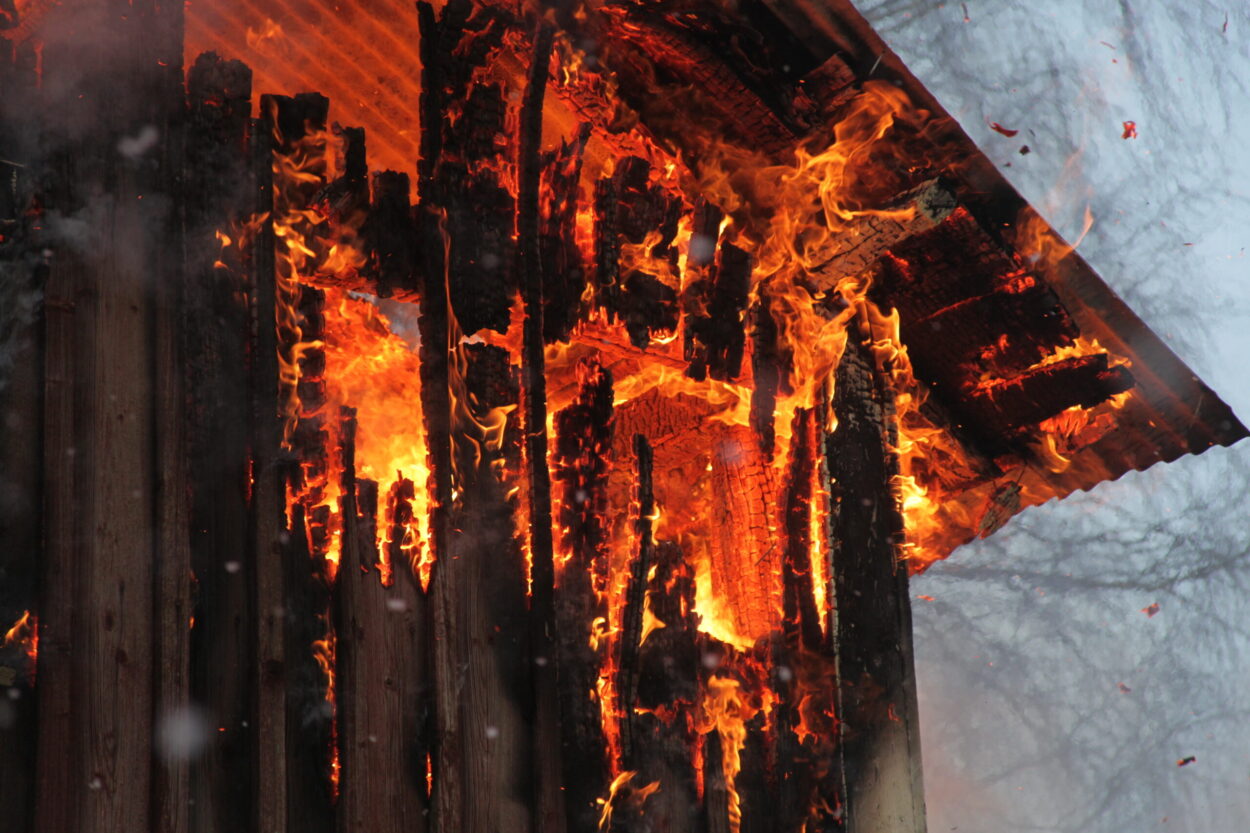Why Do I Need a Home Fire Drill?
Close to 50% of people who die in home fires were trying to escape when they died.
A developed exit plan, and practice of a home fire drill, might have saved their lives.
Here is what it is like to be in a fire.
- “You can’t see anything in front of you.”
- “You can t breathe.”
- “It’s hot. It s dark. It s hostile.”
- “You don t know what to expect.”
- “You have to go by feel.”
- “A 15-foot hallway seems 50 miles long.”
- “You can easily become unraveled.”
- “It’s not a place where humans are ever expected to go.”
Make an Escape Plan
It is important to have a plan when there are children in your home. Children sometimes need help getting out of the house. They may not know how to escape or what to do unless an adult shows them.
Have a plan for young children who cannot get outside by themselves. You will need to wake babies and very young children and help them get out. In your plan, talk about who will help each child get out safely.
It is important to learn two ways out of every room in your home, in case one exit is blocked or dangerous to use.
Remember, if there is smoke, you need to get low and go to your exits. So practice getting low and moving to your exits.
Choose a safe meeting place a safe distance from your home. Children should know what to do when they hear a smoke alarm and there is no adult around. Help them practice going to the outside meeting place. Teach them to never go back inside a building that is on fire.
Have a home fire drill at least twice a year. So everyone can practice what to do if the smoke alarm sounds.
Children and Fire Safety
Children can become scared and confused during emergencies, so teach them to never hide from firefighters.
Teach children to NEVER go back inside a burning building. Once they are out, stay out!
Teach your child to get low and crawl on the ground, where the air is less smoky.
Show a child how to use the back of his hand to check doors for heat before opening and to use a different way out, if the door is hot.
If your child needs to use an escape ladder, show him/her where you keep it and practice how to use it.
Help Me Plan My Home Fire Drill
[wpdevart_youtube caption=”” align=”left”]DIdCz8nP3hc[/wpdevart_youtube]Everyone in your household should take part in planning your escape. Fires can start anywhere in the home and at any time, so run through the plan at different times of the day or night, and practice different ways out.
- Think about how you will escape from every room, starting with bedrooms.
- If possible, plan two escape routes from each room. Your second route may be to go out a window or stand at a window where firefighters can see you.
- Decide where you will meet outside. Explain to your kids that when the smoke alarm beeps, they need to get out of the house quickly and meet at that safety spot.
- Plan everyone s role. Who will make sure children get out? Plan for special needs. Do you have: Young children? Older adults? People with temporary or permanent disabilities? Do you ever have overnight guests?
- Share your plan with babysitters and frequent visitors.
- Keep your floors, hallways and stairs clear of clutter.
- Fire extinguishers require planning too.
- Practice your home fire drill. Have kids head to their bedrooms and wait for the drill to begin. For children under 6 years old, assign adults to help anyone who’ll need it. Put one adult in charge of sounding the smoke alarm and running the drill. Next, sound the smoke alarm, start the timer and have everyone book it to the safety spot. Once everyone gets to the safe meeting place stop the timer. If you all made it in under two minutes, you each get an imaginary gold medal. If not, give it another try. In a real fire, get to the safe meeting place, then call 911 and keep everyone close until firefighters arrive.
Help me Practice My Home Fire Drill
- At least twice a year, push the smoke alarm button to start your home fire drill.
- Get out fast.
- Practice escaping from bedrooms when people are asleep.
- Make sure everyone in your household can open all doors and windows. Security bars on windows should have emergency release devices so they can be opened easily from the inside.
- Go to your meeting place.
- In a real fire, get out and stay out.
- Call 9-1-1 from outside.
What You Need To Know About Smoke Alarms
- Know what types of smoke alarms are available for your needs.
- Install smoke alarms on each level of your house, especially outside bedrooms.
- Test your smoke alarm once a month. Change standard batteries twice a year.
